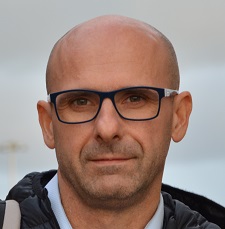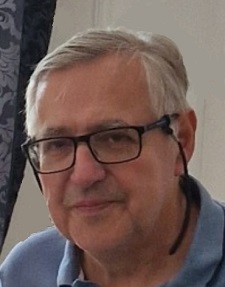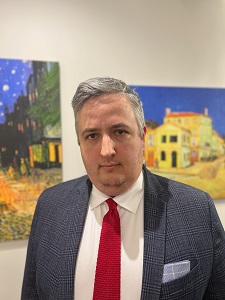PROGRAM
Program Overview
The conference general program will run for four half days from December 10th to December 13th, 2025.
Proceedings
The proceedings shall be published shortly after the conference in IFAC-PapersOnLine
Plenary lectures
CAO 2025 features the following plenary speakers :
- Gabriele Pannocchia (University of Pisa)
- Maciej Szymkat (ONT)
- Jerzy Baranowski (AGH University of Krakow)
More details about the dates and contents of the plenary lectures are provided below.

Prof. Gabriele Pannocchia
Title : On the Design, Robustness and Numerical implementation of Optimization-based Control Systems
Session : Plenary 1, Wednesday, 10 December 2025, 10:00÷11:00
University of Pisa
https://people.unipi.it/gabriele_pannocchia/
Bio : Gabriele Pannocchia received a Ph.D. in Chemical Engineering from the University of Pisa (Italy) in 2002, where he is a Full Professor since 2020. Since 2022, Dr. Pannocchia is President of the School of Engineering of the University of Pisa.
He held a Visiting Associate position at the University of Wisconsin – Madison (WI, USA) in 2000/2001 and in 2008. Dr. Pannocchia is the author of more than 150 papers in international journals, book chapters, and proceedings of international conferences.
Dr. Pannocchia is Senior Editor for the Journal of Process Control, served as Associate Editor of Automatica, and is Chair of the IFAC TC 2.4 (Optimal Control). Dr. Pannocchia was IPC co-chair of the IFAC Symposium DYCOPS 2013 held in Mumbai (India), Area Co-Chair/Associate Editor in IFAC DYCOPS 2016, IFAC World Congress 2017, IFAC NMPC 2018, UK Control 2018, IFAC World Congress 2020.
He has been a plenary speaker at the 4th IEEE Colombian Conference on Automatic Control, at the 24th International Conference on Process Control (Slovakia), at the 12th IFAC Symposium on Advanced Control of Chemical Processes (ADCHEM 2024); and a keynote speaker at several international congresses (IFAC DYCOPS 2010, IFAC NMPC 2015, IFAC DYCOPS 2016, IFAC ADCHEM 2018).
Dr. Pannocchia was the NOC Chair of IFAC ADCHEM 2021 and IPC Chair of IFAC NMPC 2021.
His research interests include model predictive control systems, process simulation and optimization, numerical optimization, multivariable systems identification, performance monitoring, and industrial implementations of advanced control systems.
Abstract : This plenary talk addresses the overarching objective of implementing effective and efficient optimization-based control systems. Specifically, it will focus on the widely-adopted class of Model Predictive Control (MPC) systems with an emphasis on three key aspects.
First, the design of MPC systems that can handle plant/model mismatches and external disturbances while ensuring reference signals are tracked without offset. Second, the development of MPC systems that directly optimize economic performance during transient states, considering potential discrepancies between the nominal model and actual plant behavior. Third, the implementation of these controllers using efficient numerical optimization algorithms, particularly interior-point NonLinear Programming (NLP) solvers.
The discussion will be illustrated with various examples from industrial processes, highlighting the main aspects of these optimization-based control systems. The presentation will conclude by outlining future research directions and identifying open problems in the field.

Dr. Maciej Szymkat
Title : Numerical solution of dynamic optimization problems using systematic transformations of potentially optimal control structures
Session : Plenary 2, Thursday, 11 December 2025, 10:00÷11:00
ONT, Kraków, Poland
https://ont.com.pl
Bio : Maciej Szymkat graduated from AGH University of Science and Technology and Jagiellonian University. His Ph. D. thesis, written under supervision of Prof. Henryk Górecki, concerned stability criteria for time-delay systems. He is an author or editor of over 50 scientific publications. He wrote several books or book chapters in modeling, simulation and optimization of dynamical systems. He was involved in activities of Cracow Centre for Advanced Training in Information Engineering (CCATIE) resulting in publishing of 13 books series in 1995-2000. He co-organized a number of Polish and international conferences including the Computer Methods and Systems series (1995-2009, http://cms.agh.edu.pl), 23rd IFIP TC 7 Conference Krakow, Poland, 2007 (revised selected papers published in IFIP Advances in Information and Communication Technology, 109, ed. by A. Korytowski, K. Malanowski, W. Mitkowski and M. Szymkat, Springer, 2009), 16th French-German-Polish Conference on Optimization, Kraków, Poland, 2013 (extended plenary papers published in Advances in Mathematical Modeling, Optimization and Optimal Control, ed. by J-B. Hiriart-Urruty, A. Korytowski, H. Maurer and M. Szymkat, Springer, 2016). In recent years his research in collaboration with A. Korytowski concentrated on numerical and analytical methods of optimal control resulting in the development of the Monotone Structural Evolution (MSE) method.
Abstract : The paper begins with a brief review of various existing approaches to the computational solution of optimal control problems in ODE systems. Special attention is paid to the representation of control discontinuities and the role of necessary optimality conditions of Pontryagin’s principle. The method of Monotone Structural Evolution is a direct method for numerically solving optimal control problem which has been developed by a dynamic optimization group at the AGH University in Kraków since the beginning of this century. In the MSE algorithm, the controls are constructed by a concatenation of arcs of control procedures taken from a predefined finite set. This sequence of procedures defines the control structure. The switching times are included in the sets of decision variables. The search for optimum consists of periods of gradient optimization, each period in a fixed decision space with constant dimension, separated by discrete changes of that space, called structure transformations where procedures composing the control are inserted or eliminated in such a way that the control does not change as a function of time. In consequence, the cost functional monotonically decreases in the course of computations. The idea of this paper is to reformulate the time-optimal control problem as a finite sequence of fixed horizon problems. Each problem is solved numerically in a separate run of the MSE. The main result of this paper is an extension of the basic MSE method with a three-phase upper level algorithm. The new algorithm is tested on the problem of time optimal transfer between the equilibrium state and a periodic trajectory of a double pendulum. The double pendulum model is often used in the areas of nonlinear dynamics and underactuated robotics as an example of a system that is highly unstable and sensitive to initial conditions. As demonstrated in the paper, the double pendulum is a Hamiltonian system where the spatio-temporal symmetries allow a reduction of the computational complexity, as well as effective identification and classification of the symmetric periodic trajectories. The practical use of the proposed algorithm is illustrated in a simple example that exposes the rare property of the MSE that it can automatically identify an optimal control structure in a finite number of steps. The analysis concludes with a more advanced example in which the new techniques are thoroughly tested.

Prof. Jerzy Baranowski
Beyond Gradients: Bayesian Approaches to Efficient Black-Box Optimization
Session : Plenary 3, Friday, 12 December 2025, 10:00÷11:00
Laboratory of Computer Science in Control and Management of the Department of Automatic Control and Robotics, AGH University of Science and Technology in Krakow.
https://isz.agh.edu.pl
http://jerzybaranowski.pl
Bio : Prof. Jerzy Baranowski (M2012-SM2021) received his master’s degree, PhD, and DSc (Habilitation) in control engineering from the AGH University of Krakow in 2006, 2010 and 2017, respectively. In 2024, he was awarded the title of professor by the president of the Republic of Poland. He is currently a full professor of automatic control at the Department of Automatic Control and Robotics of AGH University in Krakow. He is the head of the Laboratory of Computer Science in the Control and Management department. He has authored over 200 publications, including books, journal papers and conference talks. He was awarded by the Polish Ministry of Science and Higher Education a stipend for the best young researchers and a medal of the National Education Committee. His research interests include the fields of process diagnostics, predictive maintenance, decision support, statistical inference, control theory and efficient methods of computation.
Abstract : Bayesian optimization provides a principled framework for the sequential optimization of expensive, black-box functions in the absence of analytic gradients. This talk reviews the underlying probabilistic inference mechanisms, with emphasis on Gaussian-process surrogate models and the construction of acquisition functions that mediate exploration and exploitation. Key implementation details—such as hyperparameter estimation, acquisition optimization, and stopping criteria—will be presented alongside extensions for noise handling, parallel evaluation, and multi-objective settings. Scalability challenges in high-dimensional spaces are addressed through sparse approximations, trust-region methods, and additive model structures. Representative applications in hyperparameter tuning, engineering design, and robotic control illustrate performance considerations and best practices. The session concludes with a survey of recent methodological advances and an outline of open problems in automated model selection and integration with deep learning.
Instructions for speakers
- 20 minutes for presentation including self-presentation
- 5 minutes for discussion
- Power point or PDF files are recommended presentation formats
- Send the presentation file to: cao2025@agh.edu.pl the day before the presentation
- Thank you for your cooperation
